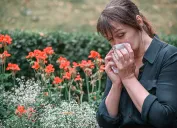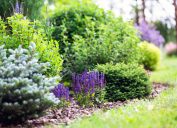12 Easy Houseplants That Don't Need Sunlight
These indoor plants have an instant brightening effect, even if your space is dim.
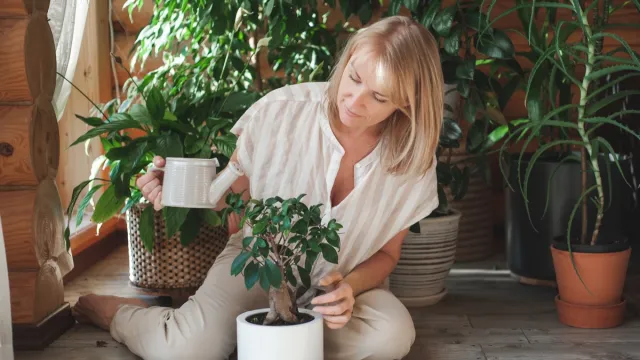
If there's one way to brighten up a dull space, it's with houseplants. Unfortunately, the problem with dim, muted spaces is that they often lack sunlight—something most plants need in order to survive. But if you're nervous your room with north-facing windows (or no windows at all!) will kill any plant you bring home, fear not. We talked to experts and found out there are plenty of options for people in places that don't bring in much natural light. Read on for 12 easy houseplants that don't need sunlight in order to thrive.
RELATED: 15 Best Spring Flowers to Plant for a Beautiful, Blooming Garden.
12 Houseplants That Don't Need Sunlight
1. ZZ Plant
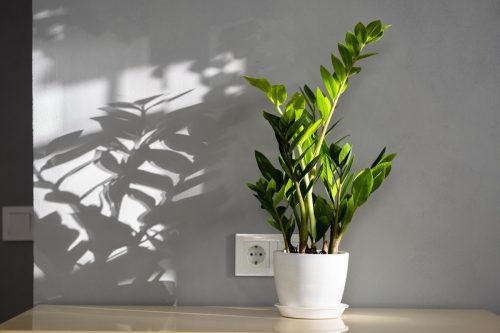
The ZZ plant has a lot going for it: It's low-maintenance; it doesn't need to be watered frequently; and it has thick, glossy leaves that are sturdy and vibrant.
It also can tolerate low-light environments, Lindsay Pangborn, the gardening expert for Bloomscape, notes.
"It will grow fastest in medium to indirect bright light, but it can adapt to a spot far from a window or under fluorescent lights by slowing its growth while remaining lush and green," she says.
Rebecca Sears, CMO and resident green thumb at Ferry-Morse, recommends paying close attention to your ZZ plant's leaves. If they're yellowing, it could mean you've overwatered the plant, but if they're falling off, you may not be watering it enough.
"Watering every one-to-two weeks is usually sufficient, especially if your plant isn't getting a lot of sunlight," she says.
2. Snake Plant
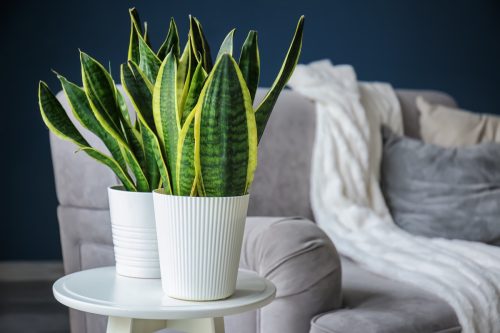
Snake plants are another houseplant that can tolerate pretty much any indoor conditions.
"These plants have thick, succulent leaves and roots that allow them to store excess energy and survive for long periods while remaining full and green," Pangborn explains. They should only be watered once the soil is totally dry.
Sears says snake plants actually prefer growing in low light, but she adds that the PH of their soil is important and should be kept between 5.5 to 7.0 "for optimal growth." A simple soil testing kit can help you determine this.
RELATED: 8 Easy Outdoor Plants That Don't Need Sunlight.
3. Tradescantia Zebrina

If you're looking for a vining plant that'll cascade as it grows, consider a Tradescantia zebrina (also known as the inchplant).
Pangborn says this easygoing plant doesn't need much sunlight, but if it's not getting any light, its leaves' vibrant stripes may fade.
Aside from its purple hue, another thing that makes this plant unique is that it grows well in containers with other plants, notes Sears. She adds that it's important to keep the top inch of soil moist, which you can determine by sticking your finger in the soil or using a moisture meter.
4. Spider Plant

This is another beautiful trailing houseplant for people who lack a green thumb or access to direct sunlight.
"Spider plants can thrive in low-light conditions and only need to be watered once a week," Sears shares.
In fact, the worst thing you can do to your spider plant is put it in hot, direct sunlight, as this can burn its leaves, according to The Old Farmer's Almanac.
One note here is that while spider plants are safe to keep around dogs, "they can be mildly hallucinogenic to cats," Sears notes.
5. Heartleaf Philodendron

"For those looking to brighten darker corners in their living spaces, the philodendron heartleaf is a great option," says Pangborn. "In fact, placing this plant out of direct sunlight is best, since the harsh rays can scorch its foliage."
This romantic-looking houseplant would fare well on a shelf or in a hanging basket, so its "vining stems and heart-shaped leaves [can] grow gracefully downwards," Pangborn shares.
Depending on its placement, this plant should only be watered once every one to two weeks.
RELATED: 7 Popular Houseplants That Are Actually the Hardest to Keep Alive.
6. Pothos Plant

At first glance, a pothos plant may look remarkably similar to a heartleaf philodendron. But while they are different plants, both are still great solutions for those lacking sunlight. Pothos plants, in particular, are also "ideal for beginners," according to Gene Caballero, landscaping expert and co-founder of GreenPal.
"Pothos plants are incredibly forgiving and adaptable," he says. "They can grow in low light conditions and only require watering when the soil feels dry."
7. English Ivy
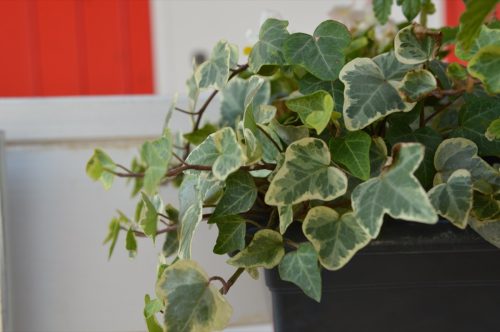
You probably associate this trailing plant with the facades of buildings, but if grown indoors in low to moderate light conditions, it'll actually stay more controlled, Sears says. It will still climb, though, so only opt for this houseplant if you can put it in a hanging basket or on a trellis.
As for watering, Sears says it's important to allow the soil to dry out before rehydrating it; too much moisture will stop it from growing.
It's also crucial to note that this plant is poisonous to humans and many animals, so keep its trailing leaves away from curious hands and paws.
RELATED: 7 Plants You Can Buy That Are Actually Dangerous Invasive Species.
8. Peace Lily
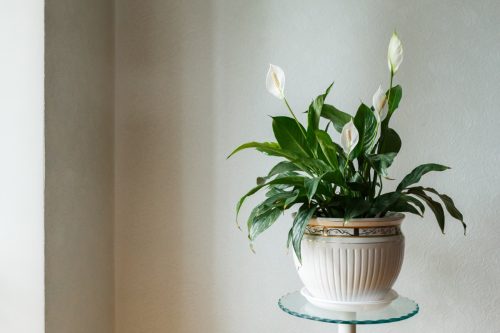
"Peace lilies are the perfect plant to brighten up a dark corner, thriving in low, indirect sunlight," Sears says.
She even recommends this houseplant for the bathroom, "as they are accustomed to humid environments and thrive from the steam of a shower."
They only need to be watered once every seven to 10 days (maybe more frequently if you live in a dryer climate), and if you notice the leaves turning yellow, it could mean it's getting too much sunlight, Sears cautions.
9. Chinese Evergreen
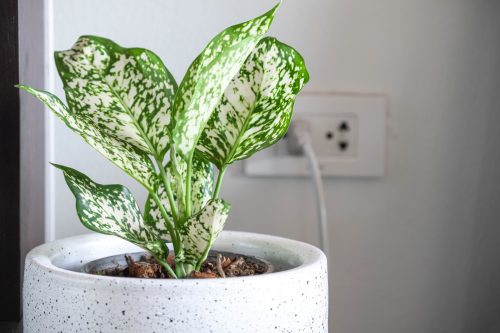
The Chinese evergreen, or Aglaonema, is one of the plants that Mike Falahee, home expert and president of awning company Marygrove, recommends most to homeowners.
"Its attractive appearance complements various furniture styles, adding an aesthetic touch to your home decor," he says, adding that he even has several in his own home.
Its appearance is not the only selling point, however. Chinese evergreens also don't need much sunlight. In fact, "to successfully cultivate this houseplant, it's essential to avoid direct sunlight exposure, which can cause scorching," Falahee warns.
10. Cast-Iron-Plant
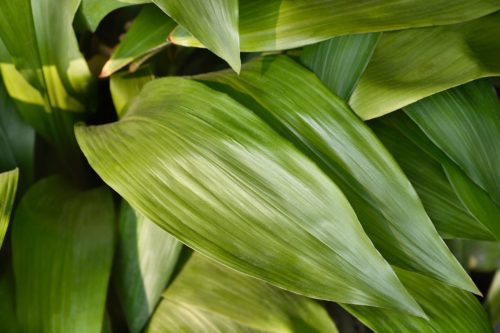
This plant's name is no trick. The cast-iron-plant truly shows "robust resilience" in any space, Caballero says.
"It thrives in low light and requires minimal care, which makes it perfect for less attentive gardeners," he explains.
RELATED: 9 Houseplants That Will Help You Breathe Better.
11. Rubber Plants
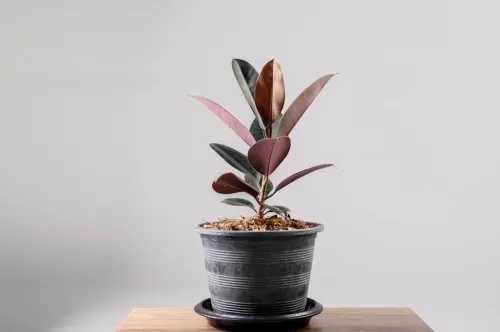
No, we not talking about fake plants made out of rubber. Rubber plants, also known as Ficus elastica, are recognizable for their "glossy, dark green leaves that add a touch of tropical elegance to any room and instantly brightening up the space," Abby Perry, owner of Abby's Garden Parties, tells Best Life.
They also have a lot of resilience, making them the perfect plant for places that don't get much sunlight.
"In the dimly lit corners of your home or office, rubber plants thrive where other plants might struggle," Perry says. "Additionally, rubber plants are remarkably drought-tolerant, requiring infrequent watering—a trait that makes them ideal for busy individuals or those who tend to forget about their leafy companions."
12. Faux Plants
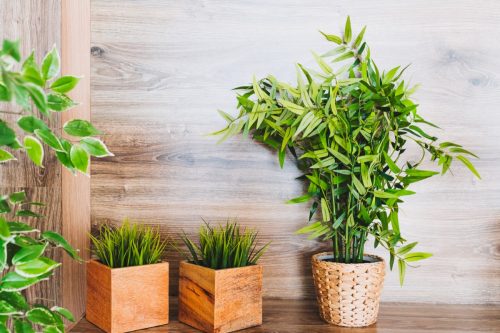
Of course, there's really no plant that requires no sunlight, since that's what they use to create food for themselves through photosynthesis. However, when a plant adapts to low light, it senses a decrease in the ability to photosynthesize.
"The natural response is for the plant to slow its growth and conserve its resources," Pangborn explains.
For this reason, Paris Lalicata, plant expert for The Sill, recommends faux plants for those who truly have no light or who simply don't have the time to care for real houseplants.
"Faux plants only need the occasional dusting to keep them looking clean!" she points out.
More tips for low-light plants
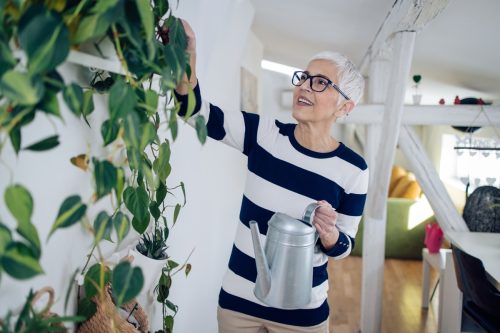
One of the most common causes of death for low-light plants is overwatering, Pangborn cautions.
"When a plant is in a low-light environment, its growth will slow and subsequently it will use water much more slowly," she says.
You'll also want to reduce your frequency of fertilizing. And if you're moving a plant from a very sunny spot to a shadier one, you may want to do so gradually.
"This approach can help reduce the likelihood of leaf drop," Pangborn notes. However, if you do notice some dropped leaves, it's usually not cause for concern.


